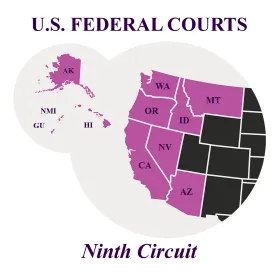Of course elections matter, and executive branch changes may bring real and meaningful policy change. But the federal Administrative Procedure Act (APA) limits the executive branch’s discretion to shape policy by requiring that policy changes be accompanied by a “reasoned explanation” generally set forth in an administrative record. A recent Ninth Circuit decision in Center for Biological Diversity v. Haaland — addressing Trump Administration changes to federal Endangered Species Act (ESA) listings — illustrates the guardrails the APA imposes that apply to all executive decision-making.
We’ve written about the APA many times (see here, here, and here) as it is foundational for the regulated community and fundamental to understanding what changes are possible when the presidency changes hands. Center for Biological Diversity v. Haaland illustrates two key points:
-
Factual findings in the administrative record can make future changes difficult. Regarding the Pacific walrus, the court relied heavily on the fact that an earlier U.S. Fish and Wildlife Service (FWS) designation was rooted in “specific findings, replete with citations to scientific studies and data [that] explained why those findings justified listing.” The later designation implicitly changed course without addressing this data. A lesson here for the regulated community is that the APA can impose hurdles on new administrations seeking to change ESA designations and other policies in the face of detailed factual determinations in the administrative record.
-
The Ninth Circuit’s resolution of this ESA designation change also illustrates that agencies must clearly explain why they are changing course and provide evidence to support involved factual determinations. Again, regarding the Pacific walrus, the court indicated that FWS could not support its designation change by merely citing scientific studies. Instead, it needed to explain why or how the studies affect FWS’s understanding of the Pacific walrus and justify a change of designation. Agencies must sufficiently explain their decisions because the court “cannot conduct the required appellate review unless the decision document offers the agency’s own reasoned explanation.” The lesson here is that regulated entities can work with regulators to ensure that policy and designation changes are appropriately supported or challenge changes when they are not.
Some background on the Pacific walrus case: The designation at issue dates back to 2011 when FWS determined to list the Pacific walrus as a threatened or endangered species under the ESA because climate change was degrading their habitat. That was an important finding. When a species is found to be endangered under the ESA, the property rights of persons owning property near where the species can be found can be significantly limited without compensation. After Donald Trump became President in 2017, FWS — now headed by Trump appointees — found that the Pacific walrus no longer qualified as a threatened species because climate change would not as directly affect Pacific walruses as they could handle some change to their environment.
Certainly, the APA permits FWS to reverse previous decisions like ESA designations. But in this situation, FWS provided little material explanation for the change. The Center for Biological Diversity challenged FWS’s determination, alleging that the agency failed to explain its change in designation from 2011 to 2017, failed to consider the best available scientific data, and inconsistently used scientific uncertainty — all in violation of the APA. An Alaska district court granted summary judgment in favor of FWS and the Center appealed. The Ninth Circuit reversed the lower court and held that FWS did not provide a sufficiently reasoned explanation. The court sent the administrative decision back to FWS with the order to provide a sufficient explanation for the designation change.
While the Biden Administration will address the designation in some manner, the lessons taken from this decision provide guidance to all species administrative decision-making. Please reach out to any Schiff environmental lawyer if you are concerned about policy changes. We will continue to watch how the Pacific walrus ESA designation fares.



 />i
/>i

